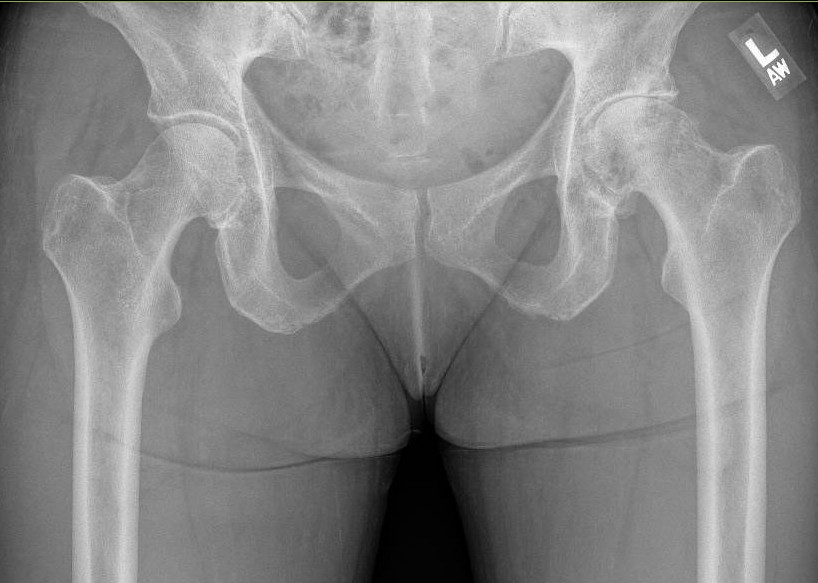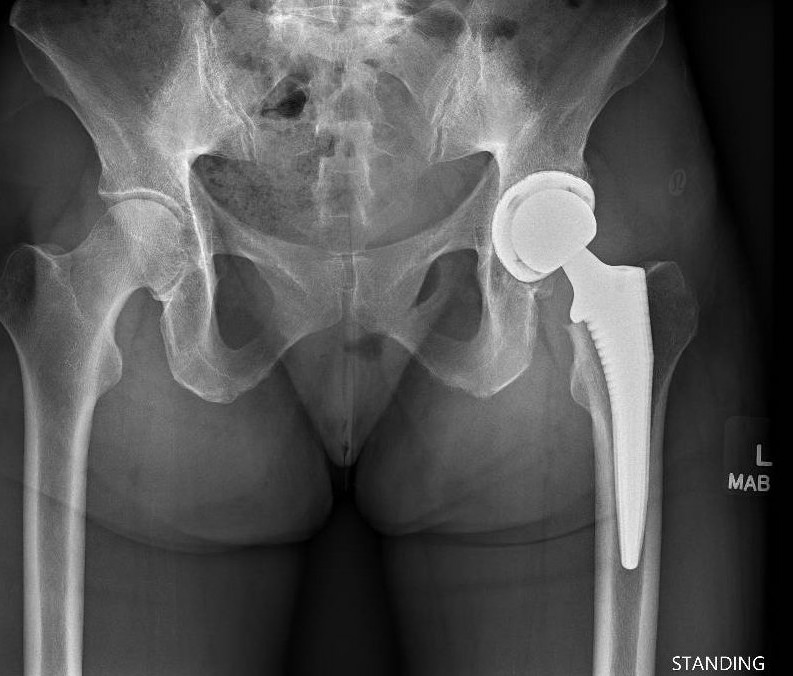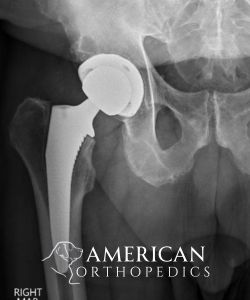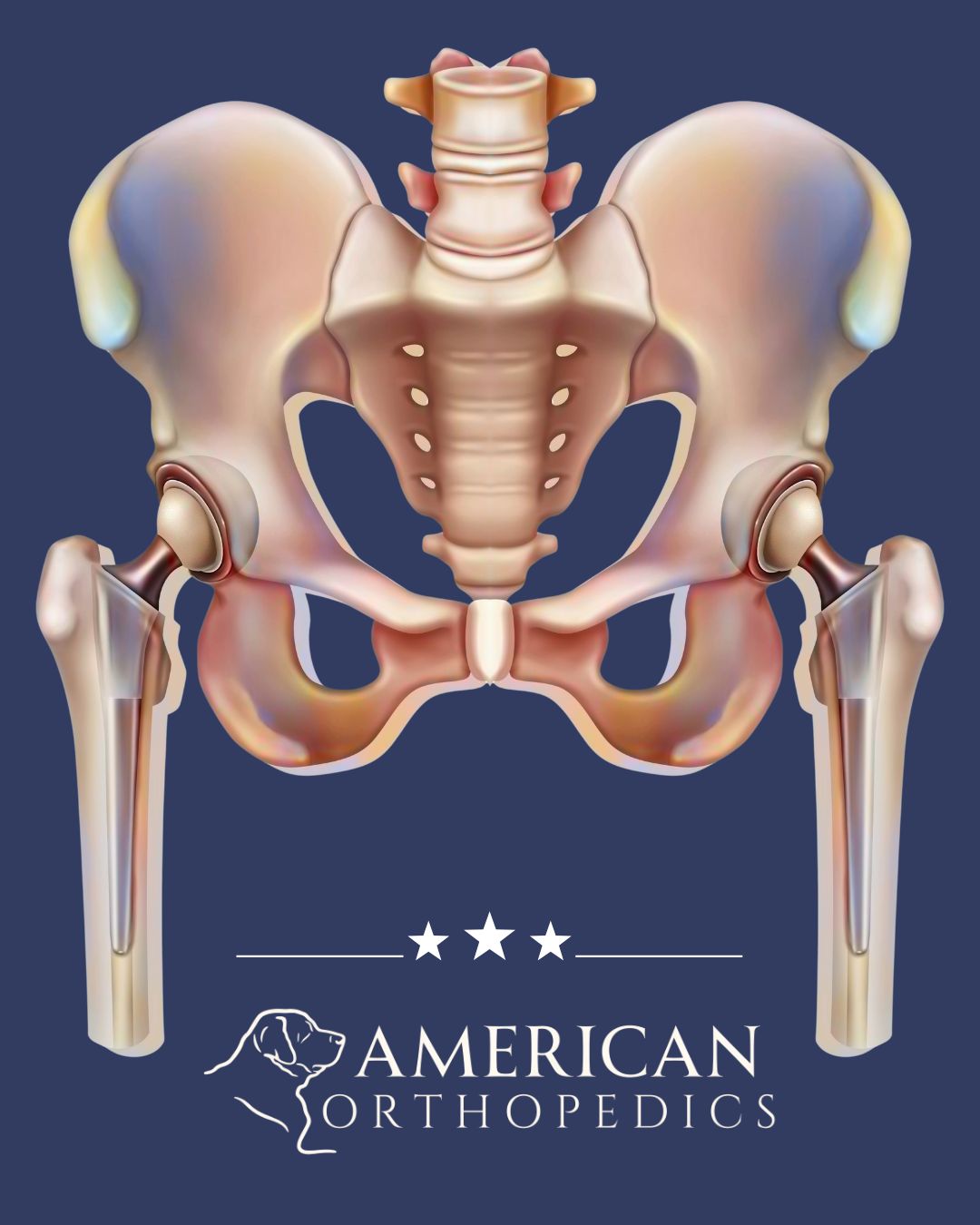Total Hip Anthroplasty
Anterior Total Hip Replacement
Dr. Ratner is an expert at Direct Anterior Approach using a minimally invasive and muscle sparing approach for Hip Replacement
Anterior Total Hip Arthroplasty
with Dr. Drew RatNer
Anterior total hip replacement is a modern surgery to replace a damaged or arthritic hip joint with a prosthetic implant that uses a muscle-sparing technique to reduce pain, promote a quicker recovery, and improve long-term outcomes.
It will restore mobility and get you back to doing what you love.
Anterior Hip replacement allows for the use of X Ray during surgery to ensure perfect positioning of the implant and perfectly equal leg lengths.
"As an athlete and surgeon, I understand how important it is to move well and live pain-free. My goal is always to help patients return to the activities they love—with the most advanced, least invasive treatment possible."
- Dr. Drew Ratner, MD, Board-Certified Orthopedic Surgeon
Actual patient experience.
Actual patient experience.
Anterior Total Hip Arthroplasty
Patient of Dr. Ratner.

Before
After

Actual patient experience
Actual patient experience.
Anterior Hip Replacement for Osteoarthritis
Patient of Dr. Ratner.
Before

After

Why Patients Choose Dr. Ratner
The region’s most preferred orthopedic surgeon
When it comes to joint replacement, your choice of surgeon makes all the difference. At American Orthopedics, you’re not just a number—you’re an individual receiving expert, personalized care from Dr. Rather, a highly skilled and compassionate provider.




1. Advanced Training & Experience
Dr. Ratner is fellowship-trained in sports medicine and has specialized expertise in anterior hip replacement. He combines academic excellence with real-world athletic insight to deliver superior outcomes.
2. Seamless, One-on-One Care
Unlike hospital systems where patients are passed between providers, you’ll see Dr. Ratner at every stage—from consultation to surgery to follow-up.
3. Boutique Practice With Modern Tools
Enjoy the benefits of personalized orthopedic care with the convenience of online scheduling, 24/7 messaging, and no long wait times. Our concierge-style approach ensures you feel cared for at every step.
How the procedure works.
The anterior total hip replacement is a minimally invasive approach for hip replacement surgery where the surgeon accesses the hip joint from the front (anterior) of the hip. Unlike traditional posterior or lateral approaches, the anterior method avoids cutting major muscles, which results in a quicker recovery.
The procedure involves making a small incision at the front of the hip. Dr. Ratner then carefully navigates between the muscles rather than cutting through them. Using a special surgical table and intraoperative fluoroscopy (real-time X-ray), Dr. Ratner is able to precisely align the new hip components.
This advanced technique ensures the artificial joint is positioned optimally, which enhances function and reduces complications. The procedure is often performed on an outpatient basis, allowing many patients to return home the same day.

Who Is a Candidate?
Not everyone with hip pain needs surgery—but for those whose daily life is limited by chronic hip discomfort or arthritis, anterior hip replacement may be an excellent solution. Ideal candidates are individuals who:
- Suffer from moderate to severe hip arthritis
- Experience trouble with sleeping, stiffness, pain, or limited range of motion despite conservative treatments
- Are active and looking for a faster return to mobility
- Are medically fit for surgery and motivated to follow post-op recovery protocols
During your consultation, Dr. Ratner will evaluate your condition and recommend the best treatment plan based on your lifestyle, goals, and overall health.
Benefits of the Anterior Approach
There are several distinct advantages to anterior hip replacement when compared to traditional methods.
- Usage of X Ray Intraop: Easy to get a perfect AP x ray during surgery which allows for more accurate placement of components in the ideal position
- Faster Recovery: Less muscle damage typically leads to a shorter recovery time.
- Reduced Pain: Patients often experience less post-operative pain due to minimized muscle disruption.
- Lower Risk of Dislocation: Preserving the posterior hip muscles can lead to a more stable hip joint, reducing the risk of dislocation.
- Smaller Incision: The incision is generally smaller and more cosmetically appealing, with potentially less scarring
These advantages make the anterior approach particularly appealing for active adults who want to return to work, sports, or daily movement as quickly and safely as possible.
What to Expect
Experience advance care at American Orthopedics.
1. Your consultation
When you visit American Orthopedics for a consultation, you’ll meet directly with Dr. Ratner—not an assistant or rotating staff member. He’ll review your medical history, perform a thorough physical exam, and order imaging studies (such as X-rays) if necessary. Together, you’ll discuss your symptoms, goals, and whether anterior hip replacement is the right solution.
If surgery is recommended, Dr. Ratner will walk you through the process step-by-step and answer any questions you have. We pride ourselves on making sure patients feel informed, supported, and confident in their care decisions.
2. The Procedure
Surgery is typically performed at a state-of-the-art outpatient surgery center or hospital. After anesthesia is administered, Dr. Ratner makes a small incision at the front of the hip and uses muscle-sparing techniques to access the joint. The damaged bone and cartilage are removed and replaced with precise, high-performance implants.
Thanks to the use of intraoperative fluoroscopy, Dr. Ratner can confirm optimal placement of all components in real time. The incision is closed, and most patients begin walking within hours of the procedure.
3. After Surgery
Recovery is often quicker and more comfortable with the anterior approach. Many patients go home the same day or after a brief overnight stay. Walking with the help of a walker begins almost immediately, often within hours of surgery. Most patients are walking independently within three weeks and may return to work earlier, depending on their job. Full healing is typically achieved within 10–12 weeks.
Throughout your recovery, Dr. Ratner and his team provide support and clear guidance so you know exactly what to expect and how to get the best outcome.
Advanced care for maxium results & comfort
Hip Replacement Recovery
Same Day Discharge
Many patients are discharged the same day as surgery
Walking immediately
Will begin walking with walker immediately after surgery
Physical Therapy
Most patients are ambulating with no assistive device by 3 weeks postoperatively and no additional therapy is needed after this
Full Recovery
Fully healed from surgery 10-12 weeks post op but most patients have returned to work before that depending on type of job
FAQ
How long does anterior hip replacement surgery take?
Most procedures take about 60 minutes. Thanks to the minimally invasive technique, many patients go home the same day.
Will I need physical therapy after surgery?
Outpatient PT isn’t typically necessary. There will be a therapist that comes to your house for the first 4 weeks after surgery to help with mobilizing and weaning off assistive devices. Dr. Ratner will customize your recovery plan and may recommend therapy based on your progress.
When can I return to work or normal activities?
Most patients return to light work after 3 weeks, medium level work after 6 weeks, and high demand work after 8-10 weeks
Is the anterior approach right for everyone?
Dr. Ratner utilizes the anterior approach over 95% of the time, but there can a few specific instances where he may recommend a posterior approach. While the anterior approach offers many benefits, certain patients may still be better candidates for other surgical methods. Dr. Ratner will determine the safest and most effective option for you.
